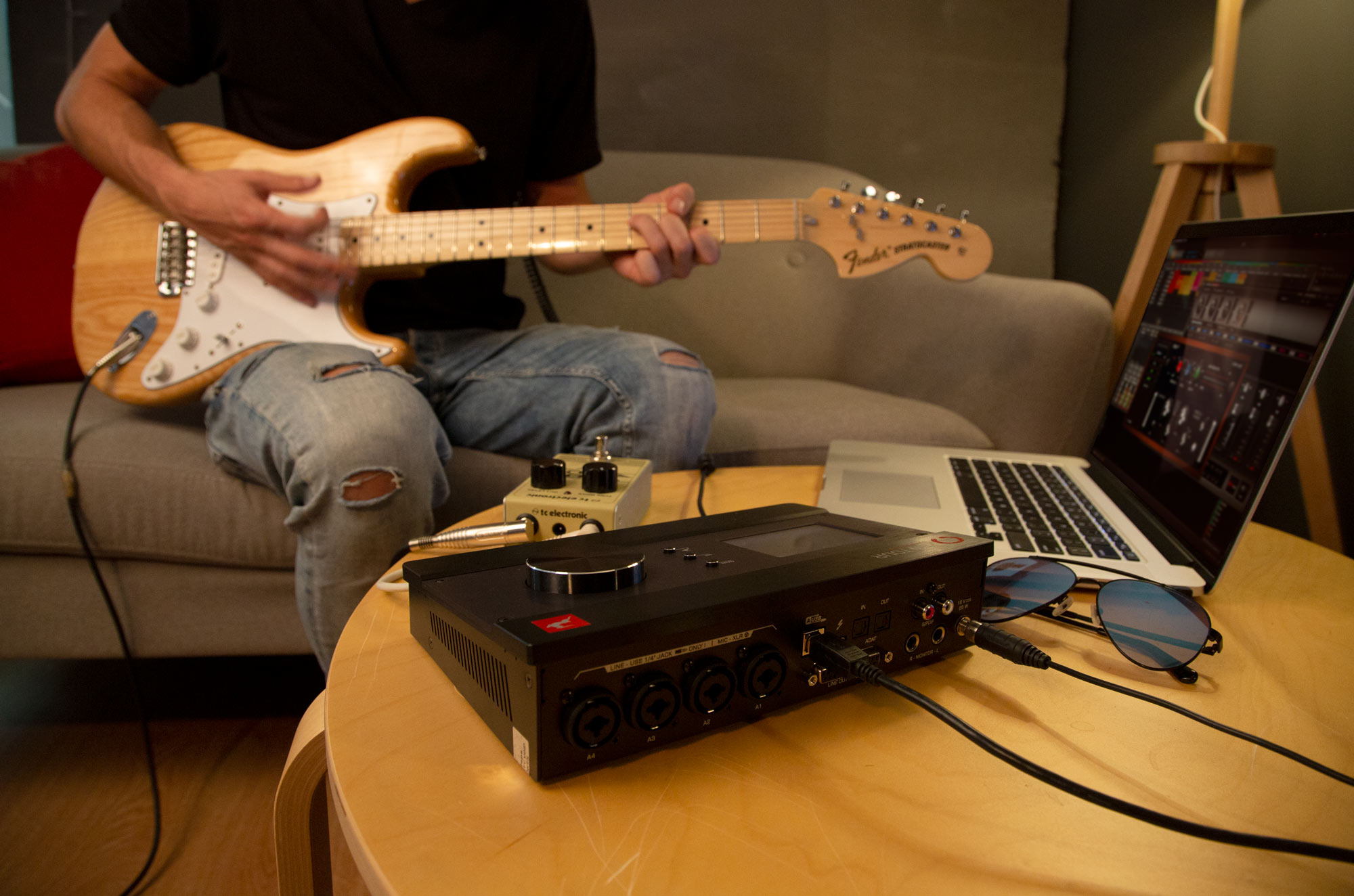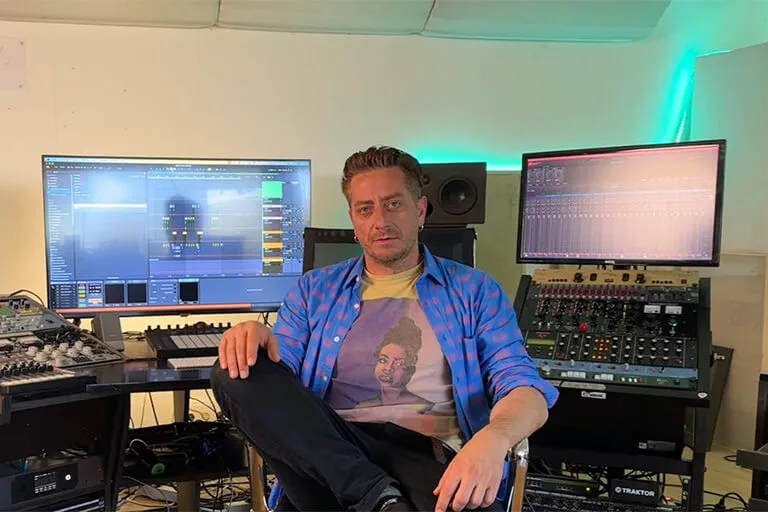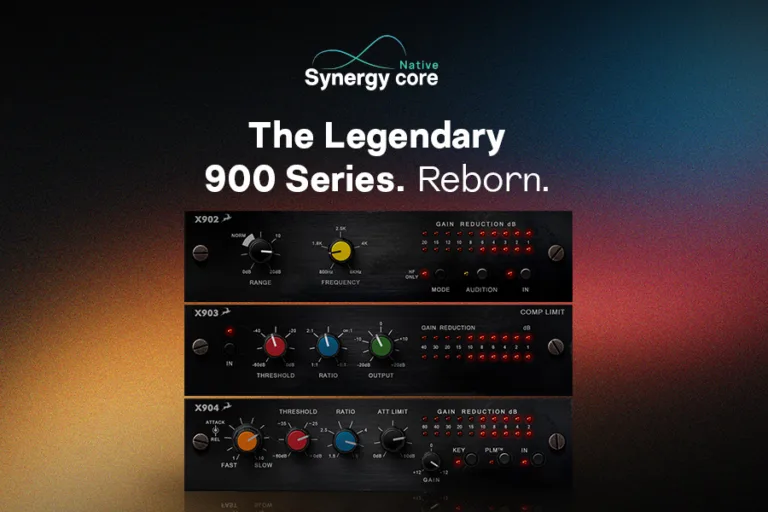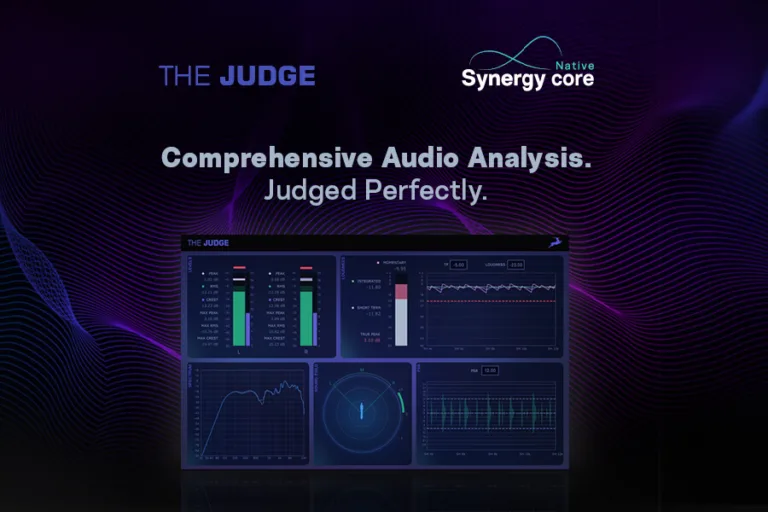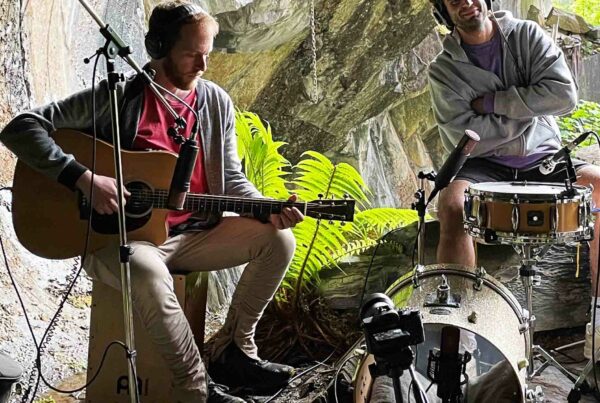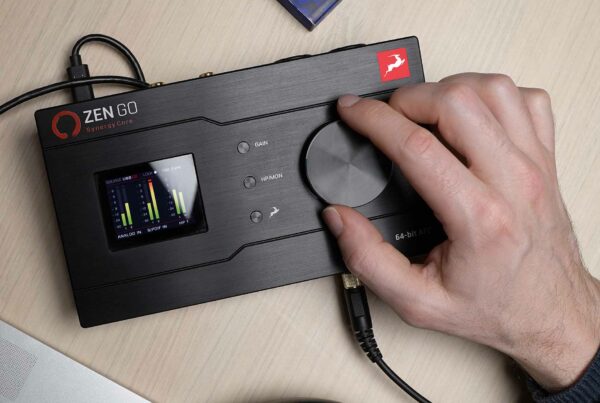How Can Your Audio Interface Help You Make Studio-Quality Music at Home?

Studio-quality audio production is not confined to control and live rooms. Rather, great ideas are most often bouncing off the walls of bedroom studios. In 2020, recording engineers, mixing engineers and record producers are most commonly all roles taken on by one person. We can only assume how many future breakout stars are recording music in their home studios right now. Producing your own projects has never been easier – it is common knowledge that you can make great music with just a computer in front of you.
However, if you are reading this you have probably already decided to expand your home studio with a microphone, speakers, some outboard equipment, and a dedicated sound card (i.e. audio interface). Besides managing inputs & outputs and providing accurate signal AD/DA conversion, audio interface has the capacity to do much more. Let’s look at what you need from your audio interface so you can achieve studio-quality without leaving your room.
Record Vocals & Instruments with Studio-Quality Recording Path
Doesn’t matter the project, everyone wants the best audio signal quality they can get. The preamp design is a key component for that to happen. Apart from applying gain to your mic and instruments or switching to line level, you would want your preamp to do it all as cleanly as possible. By boosting the signal without raising the noise floor or applying any electrical hum, audio interface’s preamp will reproduce the sound recorded by your microphone transparently. By providing low noise and distortion, you will be able to enjoy a session that will not require the re-recording of any vocals or instruments. Preamps using combo XLR jacks will allow you to record not only your mic but also any line-level instrument. While our Discrete 4 and 8 Synergy Core interfaces use discrete transistor preamps, the Zen Tour and Orion Studio Synergy Core’s preamps employ a more sophisticated design with ultra-linear components for more realistic detail and micro-dynamics. The tonal accuracy of any instrument or vocals will come to life without adding unnecessary color to your sound.
Artifact-free recordings and high-quality audio reproduction depend largely on the quality of the аnalog-to-digital, digital-to-analog converters and the digital-to-analog converter that’s driving your monitor speakers. The complex sound of your instruments needs quality analog to digital conversion with as little signal deterioration as possible, before feeding it into your DAW. The digital-to-analog monitor converter matters if you want wider soundstage and increased headroom for critical listening. With a dedicated monitoring converter (130dB and over), you will have the technological means to master your own music.
Decades of circuit design experience led us to one conclusion – you can’t have professional audio if you don’t have proper clocking. Our innovative Acoustically Focused Clocking technology and jitter management algorithms provide distinct instrument separation and eliminate any distortion caused by inconsistent clocking in playout. Both are key to the signature Antelope sound and are found in all our interfaces. It is simply the last piece of the puzzle that makes for a studio-quality recording path.
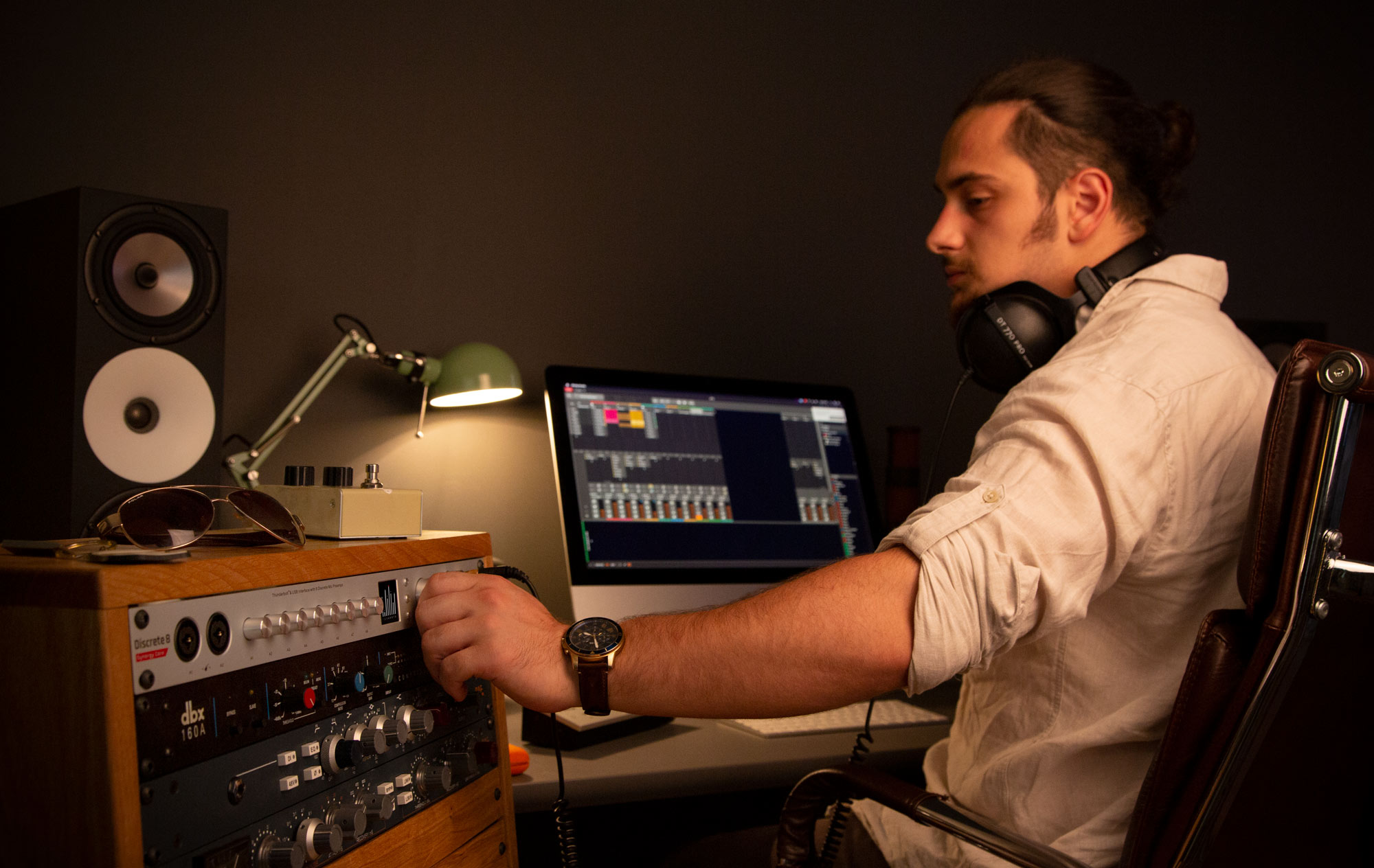
Intuitive and Flexible Workflow with Analog Flavor
Simply by expanding your options and introducing you to uncharted workflow possibilities, audio interface can get you a step closer to studio-quality audio. Efficient and purposeful routing is the way to make creative use of all gear around you and effects that emulate vintage gear are a way to add valued and sought-after analog flavor to your projects. But how exactly do we combine these things?
Since you are hardly likely to be sleeping 5 feet away from a Gyraf Gyratec X tube stereo compressor we are giving you a software effect that is emulated down to component level. This goes for the Gyraf and over 70 others. A selection of FX comes free with our interfaces while others are available in an expandable library. The Routing Matrix, found in all our interfaces, allows you not only to route inputs to outputs easily but also to process signal with those effects. This is where the onboard Synergy Core effects processing platform enters the picture. It provides imperceptible latency while recording and monitoring in real-time processed signal with many FX instances loaded, without putting any CPU load on your computer which eliminates the need for external DSP accelerators. It’s an integrated system whose every component makes for a flexible recording experience, no longer reserved only for studio clientele.
With Zen Tour and Orion Studio Synergy Core you will also be able to use your FX as hardware inserts in your DAW, so you can easily mix with them. Their greater amount of virtual racks allows for a stacked session with 256 FX instances. The advanced mixers for monitoring & summing can be used to distribute different headphone mixes to sum and mixdown your recordings. You will also be able to send out individual mixes from your DAW, using FX, to the mixers, and also record the mixed-down signal in your DAW. Example: when at home, the producer can have one mixer to listen through the DAW while the artist can listen to the performance straight through the preamp, with or without FX. A dedicated summing mixer is a purchase you will simply not have to make.
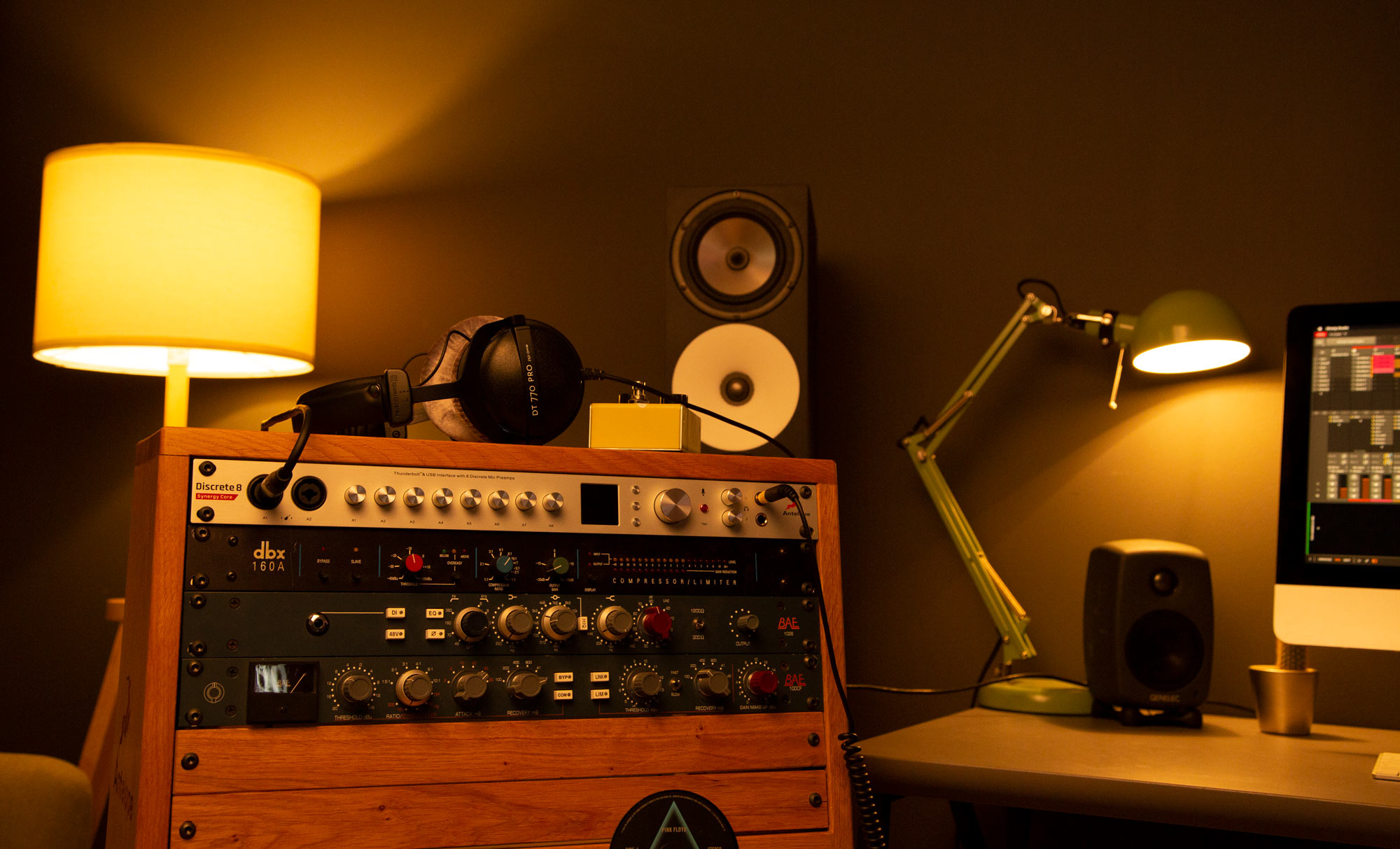
Cross-platform Compatibility and Expandability
You wouldn’t want to change your computer just to make it fit an audio interface, right? Compatibility with macOS and Windows systems as well as Thunderbolt and USB ports is key for future-proofing your whole studio and preventing headaches. This is why our interfaces have cross-platform compatibility with custom-built Mac and Windows drivers for imperceptible latency.
Should you need more I/O you can daisy-chain your old interface or external preamps to our Synergy Core interfaces via ADAT (up to 8 channels at 44.1kHz sample rate). Use them as the main interface to get the flexible workflow benefits, we discussed earlier. With the S/PDIF ports, you can expand with 2 more channels for streams that require a higher sample rate (192kHz) such as dedicated D/A monitor converters. By using the word clock outs, available on Discrete 4/8 and Orion Studio Synergy Core, or any other digital connectivity, you can distribute the interface’s highly stable clock signal across your home studio.
Additional Features
• Reamp Guitar Signal – With Discrete 8, Zen Tour, and Orion Studio Synergy Core, you have the option to reamp your guitar recordings via your favorite guitar amps, without the need for re-recording. In this way, you can take a guitar signal outside the interface for further amp processing in an easy way without needing to purchase a DI/reamp box. This can also be done live without any latency. You will be able to record both the DI signal and the reamped signal simultaneously. This recording process can be implemented in each section of the chain.
• DC-coupling for Synth Owners – All line outputs of our Synergy Core interfaces are DC-Coupled and support CV applications such as control of modular synthesizers. The DC-coupled inputs available on the Orion Studio Synergy Core are a real rarity in the pro audio world and allow your software CV environment such as Ableton Live’s CV Tools to receive control voltages from your synth. Read more about it here.
• Talkback and Hardware Insert Points for Larger Projects – For the rackmount Discrete 8 and Orion Studio Synergy Core we have implemented talkback for home studios with iso booths or if you want to record in a separate room. The Orion Studio Synergy Core has two insert points which are applied to preamp 1 and preamp 2, so you can easily connect analog gear without the need to do additional routing in the DAW or in the Control Panel. This allows you to use the full connectivity capacity without sacrificing any of your ins and out in order to implement the analog chain of effects.
• Educational Material – Before starting the creative process, we have prepared a series of video tutorials designed to help you get up and running in no time. Antelope ambassador James Ivey will get you through the whole Antelope experience – from creating your first user account to finding your way around the routing matrix. Find the series on our YouTube channel.
